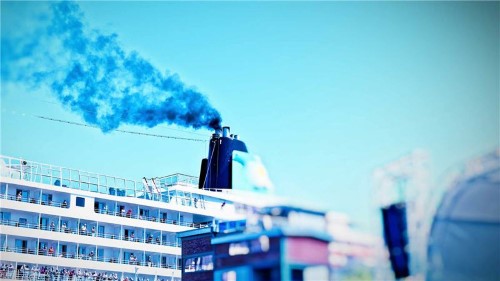Skuld’s IMO 2020 sulphur cap experience.
25.05.2021
More than a year has passed since the International Maritime Organization (IMO) mandate for the 0.50% sulphur cap for marine fuel (MARPOL Annex VI) came into force. The regulation orders ships to only use marine fuels with a sulphur content of no more than 0.50% sulphur. Ships fitted with an approved type of exhaust gas cleaning system (EGCS) or scrubbers may continue to use high sulphur fuel oils. This mandate is part of the IMO efforts to reduce air pollution and improve health and environmental conditions especially for communities close to coastal areas or ports.
Prior to 1 January 2020, there were extensive discussions in the industry on what to expect regarding the challenges VLSFO would pose in terms of operational issues and engine damage as well as challenges regarding supply of VLSFO. The most frequent parameter limits deviating from the ISO 8217 standard, reported by our members and clients, are TSP (Total Sediments Potential), Aluminium and Silicon, Sulphur, Pour Point, Flash Point and Viscosity. We see several cases regarding increased sludge deposits in the fuel system, increased sludge accumulation in the purifiers, as well as clogged fuel oil filters. Others have experienced increased wear and tear of cylinder liners, broken piston rings, fuel pumps or other components, due to increased amounts of catalytic fines in the fuel oil. Some members have de-bunkered fuel which cannot be handled and treated onboard.
Interestingly, the number of claims reported to Skuld are not significantly higher for VLSFO compared to other fuel. If we look at the bad bunker cases in 2019 (FDD and CLH) the number of claims are higher than before the introduction of the IMO 2020 fuel. In 2019 Skuld saw 435 bunker related claims on FDD and CLH combined, compared to 369 in 2020. Skuld also experiences a decrease in bunker related issues and claims in Q1 of 2021 compared to Q1 in 2020. In total, Skuld can report 30 cases so far in 2021.

Skuld always advises its members and clients to perform a proper due diligence when ordering or procuring bunker. It is very important to always conduct a vetting procedure when selecting good bunker suppliers. Always check the sales terms like time bars, sampling clause as well as the warranty as to the fitness of the fuel. Always ask for documentation of fuel batches from the fuel supplier. Ask, and always check the Certificate of Quality prior to bunkering. We also recommend the ISO 8217:2017 standard rather than the more commonly used ISO 8217:2010. Also, avoid mixing of different types of fuels, as VLSFO is very sensitive and even small amounts of co-mingling will make the fuel unstable.
When using VLSFO blends the operators should be aware of the potential operational challenges they may be facing. ISO 8217 does not include testing for WAT (Wax Appearance Temperature) and WDT (Wax Disappearance Temperature), thus measuring only the Pour Point is insufficient to determine the cold flow properties of the fuel. When the WAT and WDT results are high the operator needs to consider increasing the temperature setting of the purifiers, as well as the storage, settling and service tanks.
VLSFO blends which tend to become unstable contain high sediments that tend to fall out of suspension when the fuel is heated above the required temperature. The fuel temperature must then be reduced and maintained as per separator manufacturer’s recommendations. VLSFO with low viscosity, but with a high WDT / WAT, needs to be heated to ensure correct viscosity or stable flow and to prevent wax formation. There is also a risk of operational issues such as wax formation when the fuel temperature drops below the WAT. Fuel with low viscosity, high WDT/WAT and high level of Aluminium + Silicon (cat fines) might be difficult to treat onboard.
Skuld’s members and clients have experienced that the IMO 2020 0.50% Sulphur Cap presents some additional challenges. As a new type of marine fuel being introduced in the industry, crew onboard did not have enough experience on how to handle and treat this type of fuel at the start of 2020. Operational issues, not linked to the fuel quality but more on the understanding of the characteristics or nature of VLSFO, have included issues related to the paraffinic nature of the fuel, cold flow properties, lower viscosity, as well as other parameters. Today, Skuld sees a greater understanding by the industry and operators and less of those ‘mysterious’ problems involving filter clogging and purification problems experienced in the first and second quarter of 2020. The onboard operators are increasingly more familiar with the actual characteristics or nature of VLSFO.
In Skuld’s opinion so far, the IMO 2020 Sulphur Cap represents a successful transition.
Source:Hellenic Shipping News
